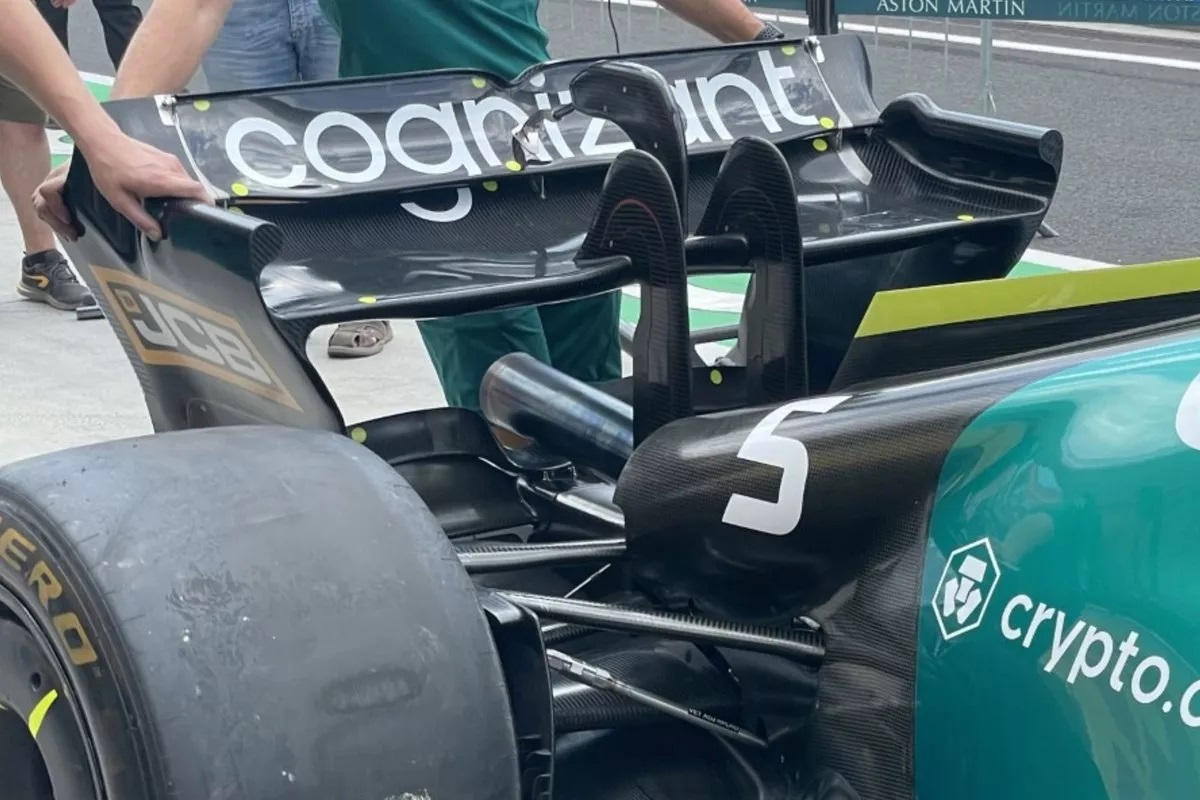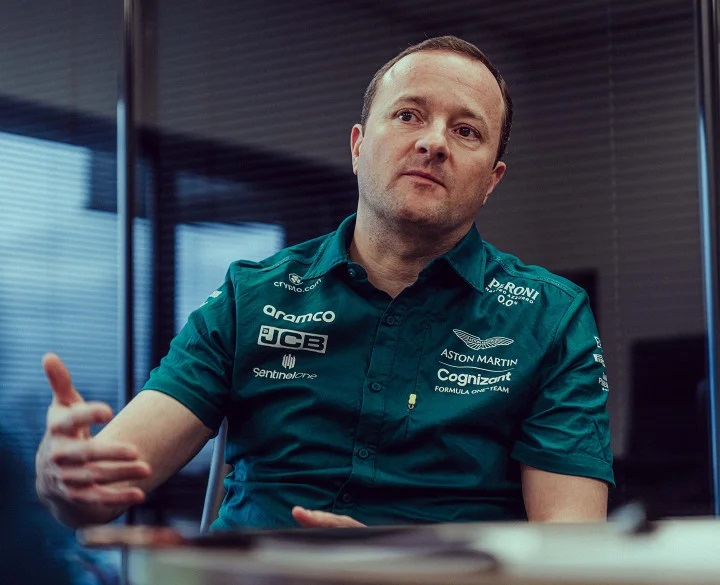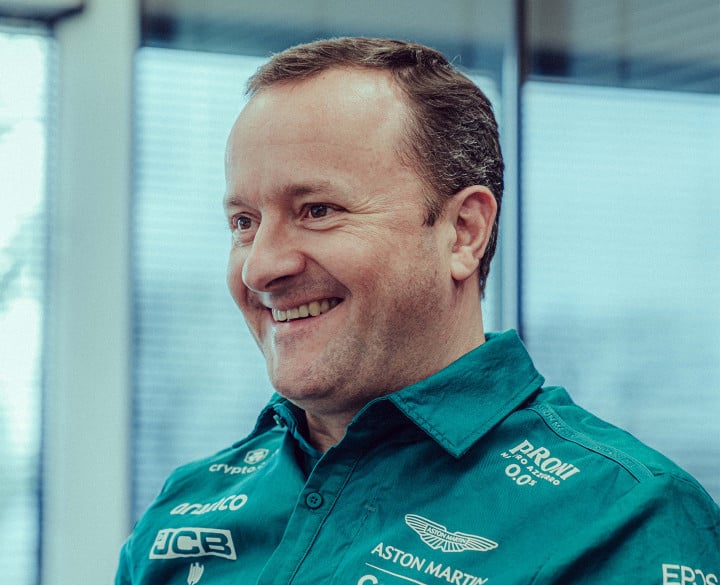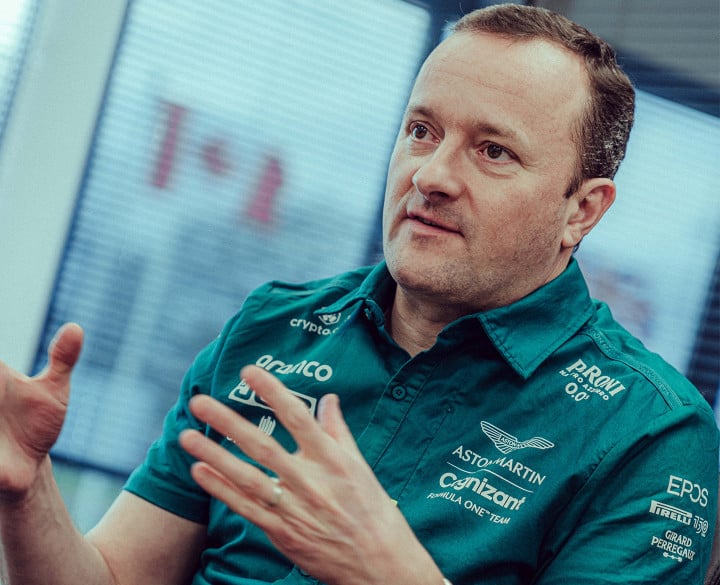F1: Aston Martin has found more loopholes in F1 rules
Aston Martin’s deputy technical director Eric Blandin says the team has found more loopholes in the F1 technical regulations that the team is exploiting with their 2023 car.
“We’ve implemented a few clever innovations on the new car – they’re the icing on the cake,” he said in an interview published on the Aston Martin website. “They’re a nice-to-have, but not a must-have.
“It’s great when you find a small loophole and can use it to your advantage, but it’s not often you can base an entire car around it. Instead, it’s essential to get the basics right, and then you can add things.

“When you start a new car project, you identify what your limitations were the previous year – and how you can overcome them with the new design – and you define the architecture that will give you the most potential for the future.
“If you pursue the wrong concept, you can end up boxing yourself in – you run out of road for development – and that’s a very difficult situation to get out of.”
Asked how much of the 2023 design was different, Blandin said: “We took all our learnings from last year’s car and applied them to this year’s car.
“So much of the AMR23 is new, it’s completely different from the AMR22. We’ve changed more than 90 percent of the parts and more than 95 percent of the aerodynamic surfaces are different.”
“We will unveil the actual car, just as we did last year,” he said. “The car we reveal at our new factory in Silverstone on February 13th will be the real AMR23. We’re not going to disappoint fans.”

Full Interview
It’s less than a month until the launch of the AMR23. Will it be ready, and what are you working on at the moment?
The AMR23 is on target. From an aerodynamic point of view, the launch-spec car is complete. All the aerodynamic surfaces have been passed on to the drawing office which has finalized the last drawings for car build.
80 per cent of my time is currently focused on the aero department – on delivering an ambitious program of updates for the season. Launch is important but it’s only a stepping stone; we need to develop the car throughout the campaign.
The rest of my time is currently spent ensuring everything is progressing well in the drawing office and that they’ve got everything they need.
Will we unveil the actual car on launch day – not a show car like many teams did last year?
We will unveil the actual car, just as we did last year. The car we reveal at our new factory in Silverstone on 13 February will be the real AMR23. We’re not going to disappoint fans.
Have we got the car concept right this year?
We brought a lot of updates to the AMR22 and the progress we made confirmed we’re on the right trajectory with the AMR23 which builds on the learnings from last year’s car.
The performance of the AMR22 was hampered by porpoising. Will the bouncing be a thing of the past with the AMR23?
It won’t disappear completely. It’s something that’s inherent within this set of regulations. You’ve got big tunnels channelling air underneath a car that is running very close to the ground and effectively has a skirt created by the floor edge that’s sealing the air in – this combination is what makes the car susceptible to porpoising.
Every F1 car experiences some degree of oscillation, but with the current regulations, due to the aerodynamic load and the variation in that aerodynamic load, this oscillation is more pronounced.
There was talk last year of how our simulation tools misled us with our initial concept for the AMR22. If our tools misled us, why are we using the same ones for this year’s car?
You use the same tools – wind tunnel, CFD cluster, software – but it’s all about how you extract the data and how you use it.
Simulating the problem is complicated. There aren’t many tools that can do that. On a computational side, you can’t predict it with normal software.
It’s not simply a case of running the car in the wind tunnel to see whether it will porpoise: it doesn’t work like that because it’s a dynamic problem – the aerodynamic loads are constantly changing.
Throughout the 2022 campaign, we advanced our understanding of this new generation of F1 car in several areas, and this enabled us to identify what was causing the bouncing.
How do you know these tools are not going to mislead us again?
The AMR22 became a laboratory. We tested so many things on the track to further our understanding and that growth in understanding was underlined by our improved performance towards the end of last season.
We were able to push the performance envelope with how we were running the car. This would not have been possible with the initial concept we had at the start of the season.
We have focused on making changes to this year’s car that will prevent porpoising, but we can’t guarantee they’ve worked until we test the car on the track. If we do suffer from porpoising, we’ve got several tools in our armory to combat it.
How different is the AMR23 from its predecessor?
We took all our learnings from last year’s car and applied them to this year’s car. So much of the AMR23 is new, it’s completely different from the AMR22. We’ve changed more than 90 per cent of the parts and more than 95 per cent of the aerodynamic surfaces are different.
Given the limitations of our concept last year, do we have a greater chance of making significant progress than our rivals?
It’s wide open. Every team has an opportunity to make significant progress with their new car. We want to make a big step forward with the AMR23. But it’s all relative, how much of a step have the others made? We don’t know yet, but I’m confident we have a good package.
Will we see a convergence in design philosophies, with teams opting for a concept akin to last year’s championship-winning car?
There will still be differences between the cars. There were two very different philosophies in 2022 and I imagine this will still be the case in ’23.
Have you already got an eye on the 2024 car?
’24 is already on the radar. We’ve started thinking about it.

It never stops, does it?
It never stops. At the end of the season, when you’ve finished with one car, you’ve already been working on the next car for some time.
Are there any loopholes in this year’s regulations? The AMR22 had several innovative design features, such as the bib wing and radical rear wing end plates.
We’ve implemented a few clever innovations on the new car – they’re the icing on the cake. They’re a nice-to-have, but not a must-have.
It’s great when you find a small loophole and can use it to your advantage, but it’s not often you can base an entire car around it. Instead, it’s essential to get the basics right, and then you can add things.
When you start a new car project, you identify what your limitations were the previous year – and how you can overcome them with the new design – and you define the architecture that will give you the most potential for the future.
If you pursue the wrong concept, you can end up boxing yourself in – you run out of road for development – and that’s a very difficult situation to get out of.
Is there even more pressure to deliver a car that’s quick and reliable out of the box with only one week between pre-season testing and the first race this year?
If you need to resolve an aerodynamic problem, it’s very difficult. A week doesn’t give you enough time to react.
And if you’ve got a significant reliability issue that requires a lot of changes to parts, your cooling or braking system doesn’t work or you’ve got suspension problems, then you’re going to be up against it this year with such a short gap between testing and the first Grand Prix.
Hopefully, the early information we get through from testing will give us a good read on how the car is behaving and confirm that everything is working as it should – then we can focus on going fast.
What’s going through your mind when you launch a new car? Are you nervous, excited, worried…?
It’s a bit of everything. You’re excited because you can’t wait to see the car on track. You can’t wait to see the car against the opposition to find out where you are in the competitive order.
You’re nervous because you’re wondering whether you’ve done a good enough job. Every team has very clever and experienced people, who are all working extremely hard. You constantly ask yourself, ‘Have we done a better job than them?’
We won’t know the answer until qualifying in Bahrain.
How do you deal with the pressure? A lot has been made of the talent the team has recruited, with your name touted in the media as a key signing – does that only add to the pressure?
The pressure comes from inside rather than externally. I want the team to do well – that is what drives me.
I view this pressure as a positive force. It means I’m working on something that matters to me – something I’m passionate about and therefore want to succeed in.
I want this team to succeed. I joined AMF1 because I think it’s one of the few teams that can join the group of teams at the front of the grid and l will do everything I can to help the team achieve that objective.
Only two teams have won a championship since 2010, Red Bull and Mercedes, and you’ve worked at both. What’s their secret?
Both Red Bull and Mercedes have very talented people, but so do we. They’ve been so successful because the core group of people leading them has been very stable and consistent through the years. The stability enables experience, ways of working and trust to build between various members of the team – throughout the entire organization – and this is very powerful.
In your time at Mercedes, the team won eight Constructors’ Championships and seven Drivers’ Championships. Why did you leave? Does winning get boring?
Winning never gets boring, but I joined AMF1 because I needed a new challenge. It’s the most exciting challenge: turning a team into a championship contender – a team that isn’t performing at the level it wants to but has massive investment and growth potential and an owner in Lawrence Stroll who is determined to take the Aston Martin name to the front of the F1 grid
Was Lawrence’s determination and vision a motivating factor in your decision to join the team?
Having an owner who wants to succeed is vital. Lawrence wants to succeed, just as he has done with his other businesses. Even after everything he’s accomplished, he’s still got that motivation to achieve even more – it’s remarkable.
It’s inspiring – everything he’s achieved, his passion, his commitment. When you have a leader like Lawrence, you want to follow them into battle.
And what about the new factory?
The new factory is going to be outstanding. The drawing office is probably the biggest I’ve ever seen. Having everyone working together in the same location is massive for us, it will unlock performance and so will having our own wind tunnel. It’s game changing.
You had a 14-month spell at Ferrari where you worked with Fernando Alonso. What will he bring to the team?
Fernando is an outstanding driver. There aren’t many drivers of his caliber on the grid – you can count them on one hand. He’s so passionate, so driven… extremely driven. After everything he’s achieved, he still has that restless hunger to win.
Signing Fernando was massive for the team. He’s going to push us a lot and help take us to the next level.
He’ll push Lance, too. They’ll complement each other and he’ll bring out the best in him. We have a very strong driver pairing, and it’s up to us to give them a competitive car.
We can have the best driver pairing on the grid, but it won’t count for much if we don’t give them a fast car. We need to deliver.
